The Final Frontier
In a society where ‘going green’ is becoming a cultural mantra, what could be more green to a homeowner than adding live plants to establish a healthy pond habitat and add environmentally friendly décor?
Live water garden plants are an integral segment of the lawn and garden market and essential components of a successful pond. Live plants soften a pondscape and tie a water garden to its surroundings. The plants that grow in and around a pond are essential habitats for frogs, toads and other amphibians. There really is something for everyone when it comes to water garden plants, which is why live plants should be at the top of every water gardener’s ‘To-Buy’ list and should be a central inventory item for any retailer with a water garden department.
Knowing the Product
The most powerful tool for selling aquatic plants is having enough knowledge to inform consumers of their many benefits. Pond plants typically fall into one of three categories: oxygenating, floating or marginal plants. The primary purpose of submerged plants (commonly referred to as oxygenators) and many of the floating plants is the natural control of algae. Floating plants shade a pond, reducing the amount of light penetrating the surface. Both oxygenating and floating plants take in carbon dioxide while simultaneously producing the necessary oxygen for pond fish.
They also have sophisticated root systems that are specially adapted to absorb excess nutrients directly from the water. Since algae need light, carbon dioxide and these nutrients to survive, algae problems can be managed without the use of expensive chemicals. Some of the most common submerged plants are anacharis, hornwort and cabomba.
In addition to shade, the cover that floating plants create provides protection against pond predators as well as an ideal breeding ground for many varieties of fish. Common floating plants for this purpose are water lettuce, water hyacinths, frogbit, water lilies and lotus.
Marginal plants are those plants that thrive naturally in wetlands, bogs or in shallow water. They provide an aesthetic means of concealing the hard edges of ponds, and often attract butterflies and birds with their various colors and scents. Marginal plants can be found in many shapes and sizes, from 4-inch border plants to large shrubs and bushes that can grow upwards of 10 to 12 feet tall. They are available in common varieties, like the cattail, or unusual and exotic species, like the carnivorous plants, which feed on small insects. Marginal plants are also extremely flexible, and most can either be planted in moist soil around the water garden or in pots placed in shallow water in the pond.
Beauty’s Only Pond Deep
And, of course, who can resist the sensational beauty and subtle fragrances of water lilies and lotus? For many years, water lilies and lotus have been used in art and photography as the quintessential symbol of the water garden, representing peace and serenity. But they have purpose beyond their beauty. The leaves spread over the surface of the water garden, providing necessary shade, while the roots absorb excess nutrients. Chosen correctly and with minimal care, water lilies and lotus can live many years in a pond.
Water lilies are classified as either hardy or tropical. Hardy water lilies can survive in cold climates where water commonly reaches freezing temperatures, while tropical water lilies would need to be cared for indoors to survive the cold. Some customers prefer to treat tropical lilies as perennials and purchase them year after year. Hardy water lilies come in red, pink, peach, yellow, white and ‘changeable’ varieties, whose bloom color changes as it ages. Tropical water lilies are also available in white, red, pink and yellow, but have blue, lavender/purple, and autumn (shades of orangey-brown) cultivars as well.
In addition, tropical lilies have night-blooming varieties not available in a hardy lily. Lotus are hardy water plants that have long been revered in China both as a sacred symbol in their religious culture and as an edible plant with medicinal qualities. They have stunning blooms that tower over the foliage and can range from 4 to 12 inches in diameter. Lotus leaves are slightly cupped, soft and green, and are unusual in that they repel water. The leaves of smaller varieties are 6 to 8 inches in diameter, while the leaves of larger varieties can be more than 20 inches across.
Setting up a live plant display for customers to enjoy can be as easy or as sophisticated as you want to make it. A small container garden for beginners can hold a few submerged plants, a few potted marginal plants, and a lily or lotus. Any no-hole container will work: plastic or ceramic planters, barrels, or even metal cattle troughs or old bathtubs will work. This makes it easy for a consumer to envision such a garden on their porch or patio.
For larger, more ambitious garden centers, a small pond area can be constructed by stacking landscape timbers, cinder blocks, or wall border stones and lining it with a thick plastic or rubber pond liner. It only takes 3 to 4 inches of water to display marginal plants, and about 12 inches for oxygenators, lilies, lotus and floating plants. If you construct a deeper bed, marginal plants can be elevated on small bricks to the shallower depth they need.
For practical to purely aesthetic reasons, everyone benefits from the addition of live plants to a pond environment; and from the smallest container garden to the largest pond, there are suitable plants for every water garden type.

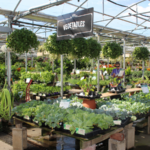
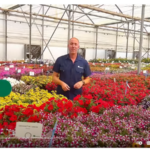


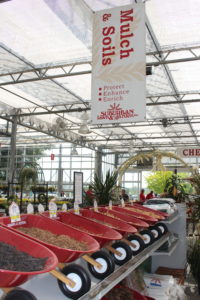



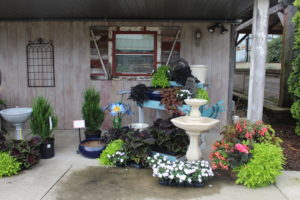
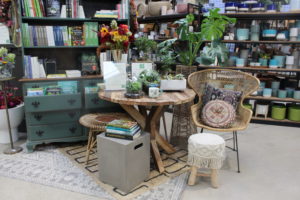
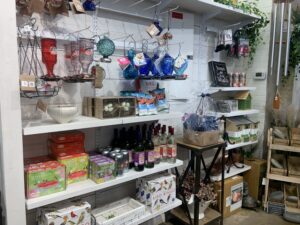

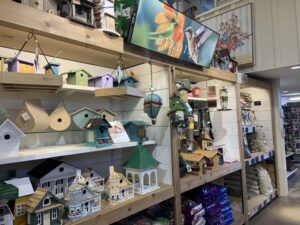
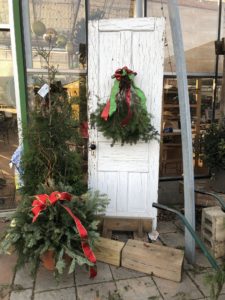
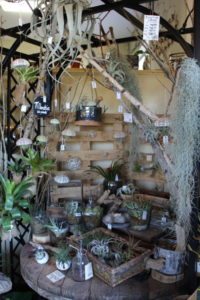
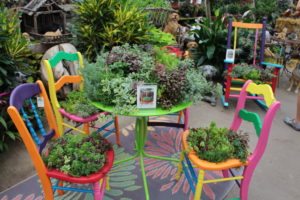
 Videos
Videos





